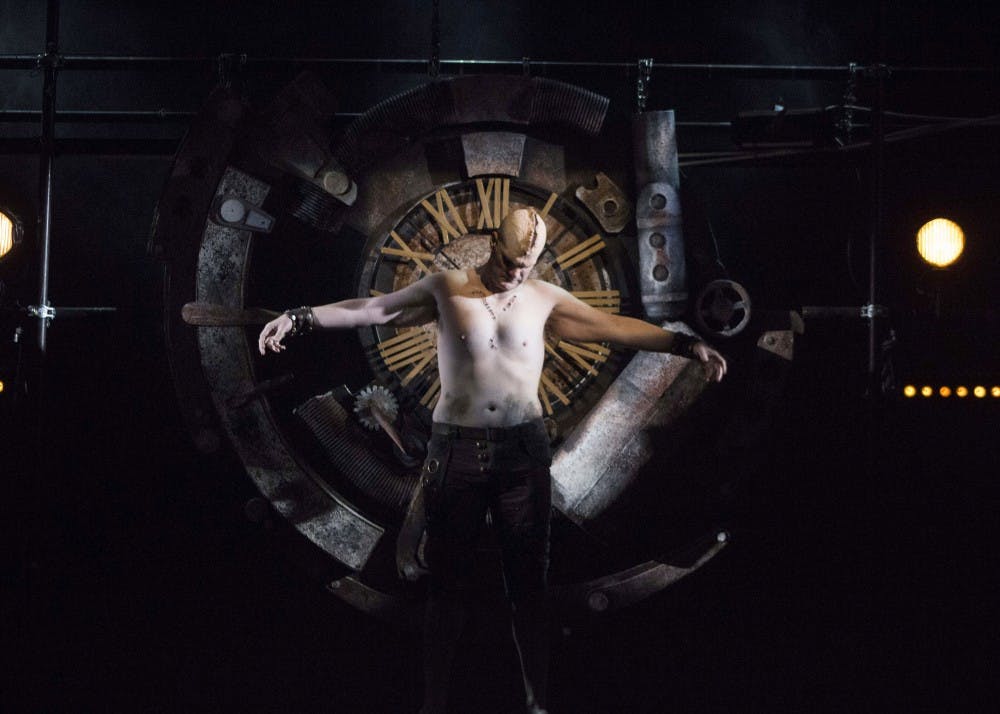The Creature emerged in the production of “Frankenstein,” which premiered Oct. 27 and runs through Nov. 5 at the Buskirk-Chumley Theater. Tickets start at $15.95.
“Can a man be God?” Victor Frankenstein, character in “Frankenstein” and creator of the Creature, said. “I had to find out.”
Based on Mary Shelley’s 1818 novel “Frankenstein,” the production follows the Creature in his quest to seek happiness and a place in society. However, due to the lines of bolts across his scalp and face, the exposed muscle on the back of his neck and the sew marks down his chest, he is regarded as a hideous monster wherever he goes.
“He wants to be part of society, but nobody really accepts him,” Chris Ellis, actor playing the Creature, said. “This journey is about finding some sort of acceptance.”
Only when he meets DeLacey, a blind man, does he find compassionate friendship. From DeLacey, the Creature learns to speak and read and also learns about the world and society.
He jumps with youthful glee on his first observation of snow and bombards DeLacey with naive questions like, “Am I poor? Why?”
“Delacey teaches him and educates him and he learns right from wrong,” Ellis said. “Or, at least the idea of those things.”
Shortly after hearing the Creature speak for the first time, Victor attempts to murder him. Characters shriek in fear at the sight of him and he is beaten with bats and clubs because of his horrifying appearance.
“It is very much the story of the ‘other,’” Randy White, director, said. “A character with differences, a character who doesn’t understand his place in the world.”
Continually, however, he is betrayed by Victor and society as they thwart his happiness. Beatings, broken promises and lies set him on a path for revenge against Victor.
“It’s sort of nature versus nurture, the idea that he’s just sort of a monster, he doesn’t know right from wrong,” Ellis said. “It really says no, the reason he’s like this is because of how he’s treated.”
A central idea of the show is the question of whether science and scientific experiments are an attempt to wrest a Godlike control over human life and death.
“We see industrialism and all of the misery that’s brought about by this belief in science, when in fact we’re moving away from more organic truths of human nature,” White said.
The show’s design elements reveal the science fiction side to the show. Mangled, bloody corpses are revealed with dramatic lighting shifts and resounding bass cues. Rustic bronze cogs and pipes hang above the stage in pre-Victorian steampunk style.
Dramatic spotlights highlight characters, the walls and shine into the audience as bass cues hit and settle into the atmosphere of the show.
“The play jumps off the stage,” White said. “Big music cues, sound cues and big lighting cues and actors are storming and raging against their fate.”
Whether coming for the science fiction, design elements or the story of a compelling honest human, the production is compelling, White said.
“It’s much more the story of how can exist in this world with some purpose, and meaning and happiness,” White said. “Trying to find that Eden, that place of happiness.”



